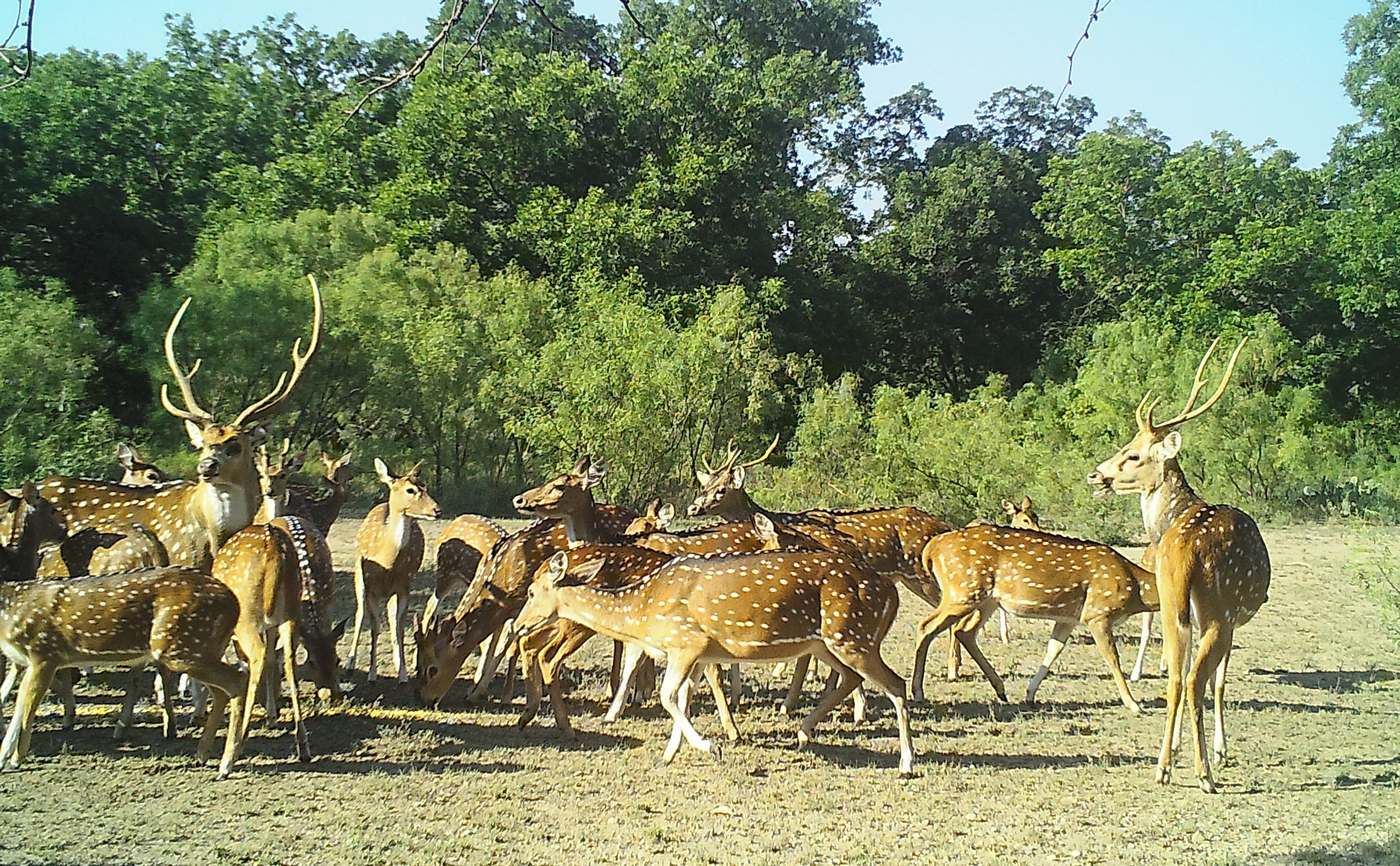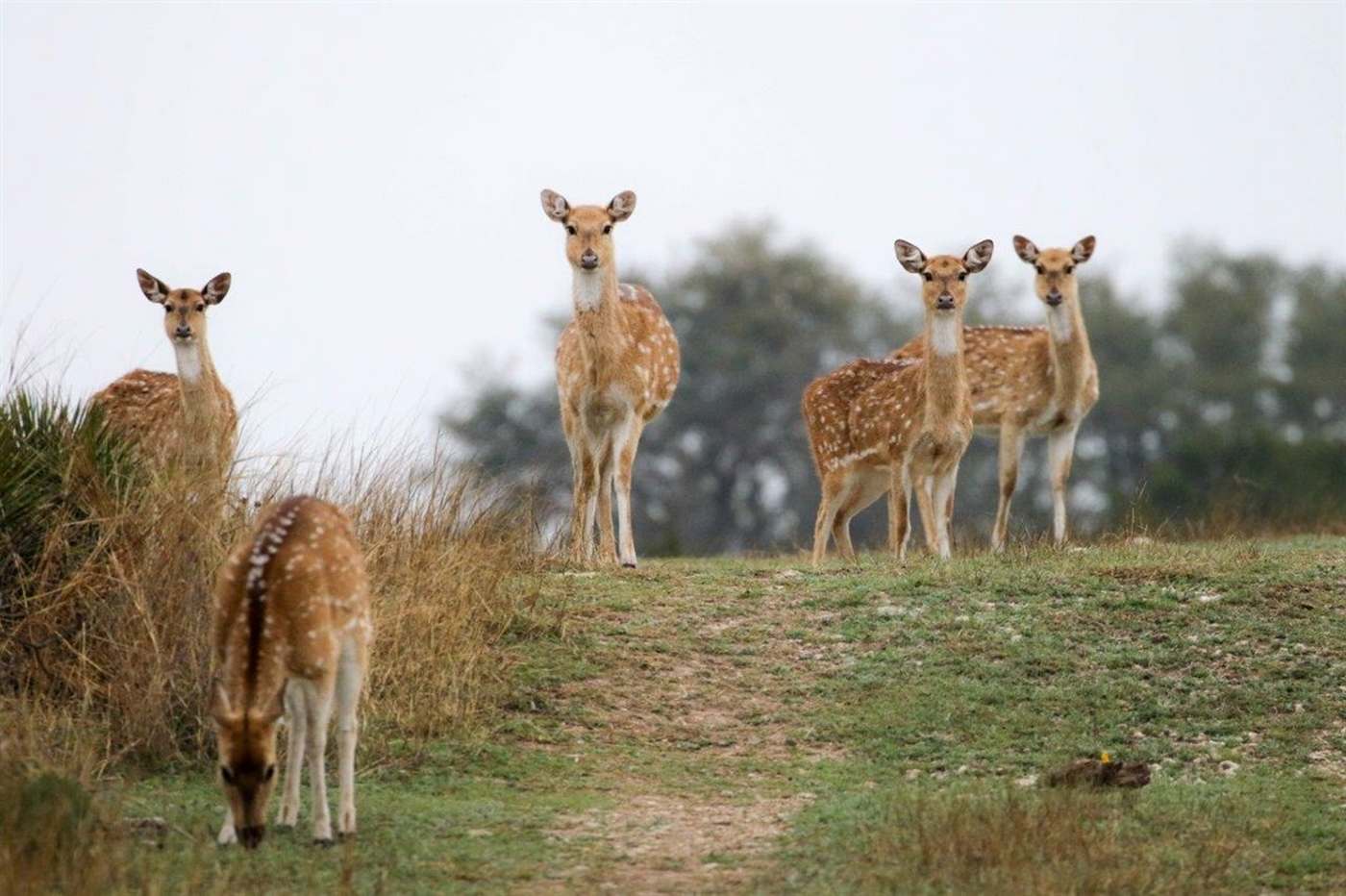Axis Deer Population Control
Is axis deer population control needed? Maybe. Gillespie County AgriLife Extension and Hill Country Alliance have launched the Axis Deer Control Project and are encouraging landowners and hunters to participate.
Axis deer are an exotic species that were introduced from India to the Texas Hill Country in the 1930s. Since their introduction, this species has proliferated in several portions of Gillespie County, adversely impacting native wildlife, particularly white-tailed deer.
Exotic species such as Axis deer can out-compete native white-tailed deer because of their ability to shift their diet to grasses, once they have eaten desirable forbs and browse. White-tailed deer, however, cannot switch their diet preference, and will eventually suffer from malnutrition if grass is the only available vegetation.
Axis Deer Compete with Whitetail
Joyce Moore, a Texas Parks & Wildlife Department biologist based in Gillespie County, notes, “Axis deer and other free-ranging exotic ungulates pose a significant threat to Hill Country ecosystems through a unique ability to adapt breeding seasons and forage preferences. These ‘adaptations’ have allowed them to expand their range to habitats historically occupied only by native species.”
Following a recent deer census for the Cave Creek Wildlife Management Association, local landowner, Ronnie Ottmers, expressed his concerns about the population growth of this exotic species. “Over three nights, we counted 347 white-tailed deer and 546 Axis deer along our transects. It’s ridiculous.”

Texas Tech University Ph.D. student, Matthew Buchholz, adds that Axis deer are also physically larger and more aggressive than native white-tailed deer. They can browse on their hind legs between 6 – 7 feet and, when in herds that can exceed 150 animals, may physically displace white-tailed deer and other animals from optimal habitat and food sources.
The goal of the Axis Deer Control Project is to raise awareness about the impacts of free-ranging Axis deer, to support research that will improve management, and recognize land stewards for their efforts to control this exotic species.
Axis deer may be hunted year-round with a hunting license; they may also be trapped.
Axis Deer Population Control, Contest
Hunters and trappers are encouraged to bring a frozen ear from each harvested Axis deer to one of the scheduled drop-off points; ears will be used by a Buchholz, a graduate student at Texas Tech University, who is conducting genetic research that will enhance the understanding of the Axis deer population health and dynamics in the Hill Country.
- November 16th at Stonewall Smokehouse from 9 am to 11 am
- December 11th at Gillespie County AgriLife Extension from 8 am to 5 pm
- January 11th at Stonewall Smokehouse from 3 pm to 5 pm
- January 12th at Weinheimer and Son from 3 pm to 5 pm
Participants will be entered into a drawing for prizes donated by Lochte Feed General Store, Vogel Orchards, Los Cazadores, Weinheimer and Son, Hohmann General Store, Sweetbriar Rose, Cave Creek Wildlife Management Association, and the Gillespie County Agricultural Committee.

Considering Axis Deer Population Control
Future stories will highlight the ongoing research by Texas Tech University and the adverse impacts of Axis deer on agriculture and creek-side (riparian) habitat. To learn more, contact Daniel Oppenheimer (210-287-0478 or daniel@hillcountryalliance.org).
The Hill Country Alliance is a nonprofit organization whose purpose is to raise public awareness and build community support around the need to preserve the natural resources and heritage of the Central Texas Hill Country. Visit us at www.hillcountryalliance.org.